The mucous membrane is necessary for a person to prevent the penetration of infections into internal organs. At the moment when pathogens enter the nasal passages, blood rushes to this tissue, and it increases in size. This is how the defense mechanism against external threats works. The same mechanism allows us to breathe clean air, in which not only dust is absent, but also foreign inclusions in the form of bacteria, viruses, allergens, etc.
The mucous membrane consists from many ciliated cells, therefore, its epithelium does not allow pathogens to quickly move along the nasal passages. Only one ciliated cell can consist of 500 mobile cilia, which can make up to 30 vibrations in one second. And while staying in an active mode, the ciliated epithelium not only prevents the penetration of microorganisms, but also filters out solid particles that penetrate into nasal cavity out of thin air.
But as soon as the body gets overcooled or weakened the immune system, serious changes begin to occur in its work. The frequency of movement of the cilia decreases, and nothing prevents pathogens from reaching respiratory tract... It is at this moment that reflex mucosal reaction... There is swelling, inflammation, blood and lymph flow to the affected area.
Symptoms of swelling of the nasal mucosa
To establish whether a person has edema of the nasal mucosa, specialists are helped by symptoms that can be presented in the form of two main groups:
- inflammatory;
- dysfunctional.
Inflammatory-type symptoms manifest themselves in the form of violationsassociated with the general well-being of the patient. The most common among them are:

Dysfunctional symptoms are mainly represented by disorders that cause more serious changes in the body:
- breathing is disturbed or completely stopped, which negatively affects blood circulation in the brain. Because of this, patients often experience a decrease in performance, as well as memory impairment;
- a person begins to recognize odors worse, and this causes a decrease in appetite;
- liquid discharge appears, sometimes purulent exudate occurs;
- the voice changes.
If the above symptoms are found in a baby who has not yet learned to breathe through his mouth, there is a danger of stopping his breathing during feeding.
Swelling of the nasal mucosa: common causes
Experts highlight three main reasonsthat can cause swelling of tissues in the nasopharynx:
- mechanical impact;
- allergic reactions;
- respiratory disease.
According to statistics, most often the tissue swells due to hypothermia of the body. If, after a long stay in the cold, a person's feet freeze or his head gets cold, then the protective ciliated epithelium performs its main function much worse. It was at this moment and respiratory illness begins... And if the person continues to be inactive, then chronic swelling of the mucous membrane may gradually develop.
This condition must be treated with great attention for the reason that it can cause respiratory failure, as well as blockage of normal cerebral circulation. Against the background of a lack of oxygen, frequent headaches occur, and due to insufficient ventilation of the paranasal sinuses, sinusitis and sinusitis begin to develop.
At the beginning of development chronic edema manifested by difficulty breathing, and this condition is observed both during work and at rest. In some cases, breathing is difficult with only one nostril, while the other allows air to pass through much better. If you find these symptoms in yourself, you should immediately to be examined by an ENT, because following the swelling, you may soon develop other, more serious diseases:
- hernia in the brain;
- adenoids and polyps;
- improper structure of the nasal septum;
- allergic reactions.
 During allergic reactions, swelling of the nasal mucosa is caused by a specific type of allergen. Most often in this seasonal pollen is to blame, the use of certain drugs, food, an unfavorable environment and other factors. With a similar condition, there is an extensive swelling of the nasopharyngeal mucosa.
During allergic reactions, swelling of the nasal mucosa is caused by a specific type of allergen. Most often in this seasonal pollen is to blame, the use of certain drugs, food, an unfavorable environment and other factors. With a similar condition, there is an extensive swelling of the nasopharyngeal mucosa.
As soon as the allergen penetrates the nasopharynx, the membrane immediately begins to react, which manifests itself in the development of edema of the nasal mucosa, the release of liquid mucus, the occurrence of frequent sneezing, and sore throat. Some patients may experience a dry cough, change the voice. In some cases, additional symptoms are added - the appearance of bleeding, headache and facial pain, the skin at the tip of the nose begins to irritate, and dark circles appear under the eyes.
Realizing that you have symptoms of allergic swelling of the nasal mucosa, you should first of all rinse the nasopharynxto cleanse the allergen. This can be done with warm boiled water, after which be sure to take an anti-allergic agent.
In the post-rehabilitation period, in some patients who underwent surgery, the mucous membrane in the nasopharynx area often swells. A similar condition can occur with poor circulation and insufficient drainage of the sinuses. During this period, the patient should properly care for the nasal cavity, since until the wounds are completely healed and the connective tissue is formed, the shell will always be irritated and influenced inflammatory processes.
For warning chronic edema nasal mucosa caused by mechanical damage, experts recommend the following measures for the care of the nasopharynx:
- during the first five days after the operation, it is necessary to rinse the nasopharynx with the use of antiseptics;
- it is possible to remove crusts and dried blood clots only from the fourth day;
- to quickly cleanse the nasal cavity from dead tissue, it is recommended to use corticosteroids in the form of ointments;
- from time to time it is necessary to moisturize the mucous membrane;
- mucolytics are recommended to improve drainage of exudate.
How to relieve swelling of the nasal mucosa?
If, according to the results of the diagnosis, it was possible to establish that the swelling of the soft tissue in the nasal cavity was caused by a respiratory viral disease, then the doctor prescribes the following treatment:

Very often, when a patient does not know how to relieve swelling of the nasal mucosa, he has to consult a doctor. After all, if it is wrong to treat edema, then the shell may increase in volume, and over time, polyps may appear at this place. They can be removed only with the help of an operation, which is mainly carried out with a laser device, which provides minimal pain and excludes blood loss during the procedure. Already in the post-rehabilitation period, patients are transferred to conservative treatment.
In some cases, treatment can be carried out using nasal instruments. Using precise surgical instruments, it is possible to successfully treat any pathology in the distant parts of the passages and sinuses. Such operations are performed under local anesthesia. After its completion, the patient should stay for about 7 more days in the inpatient unit under the supervision of a doctor.
If it becomes known that the cause of persistent edema is curved septum, then the doctor may prescribe septoplasty as a method of influencing the affected area. But in any case, the first step is to establish the cause of the swelling of the shell, and only then, taking into account the identified diagnosis, the doctor needs to choose the most appropriate method of treatment.
Swelling of the nasal mucosa: treatment with vasoconstrictor drops
 Having discovered the symptoms of a respiratory illness, not all patients immediately turn to doctors, some try to treat themselves on their own. To do this, they go to the pharmacy, where they buy vasoconstrictor drugsto relieve swelling and nasal discharge. However, it should be borne in mind that such medications maximum 10 days possible subject to strict adherence to the dosage recommended in the instructions.
Having discovered the symptoms of a respiratory illness, not all patients immediately turn to doctors, some try to treat themselves on their own. To do this, they go to the pharmacy, where they buy vasoconstrictor drugsto relieve swelling and nasal discharge. However, it should be borne in mind that such medications maximum 10 days possible subject to strict adherence to the dosage recommended in the instructions.
Every patient needs to know about vasoconstrictor drops that they can only temporarily relieve the symptoms of the disease, and cannot completely cure its cause. If you take these drops for too long, then they become addictive in a person.
Today, many different medicines are offered in pharmacy chains that can quickly remove swelling and improve breathing. Some are effective for only a few hours, while others remain effective for most of the day. Drops containing such active ingredients as Xylometazoline, Oxymetazoline, Naphazoline, Phenylephrine have shown themselves best in treatment.
ethnoscience
To quickly normalize the mucous membrane, along with drug treatment can apply methods from traditional medicine:

Conclusion
 The nasopharynx plays an important role in the functioning of the body. She speaks a kind of protective barrierpreventing penetration into the body various viruses and bacteria. But when it does not cope with its function, the path opens for pathogens to the respiratory tract, and then it is almost impossible to avoid the development of acute respiratory diseases. All this clearly shows why it is so important to monitor the condition of the nasal cavity.
The nasopharynx plays an important role in the functioning of the body. She speaks a kind of protective barrierpreventing penetration into the body various viruses and bacteria. But when it does not cope with its function, the path opens for pathogens to the respiratory tract, and then it is almost impossible to avoid the development of acute respiratory diseases. All this clearly shows why it is so important to monitor the condition of the nasal cavity.
Any inflammation can cause serious complications. Therefore, if your nasal breathing has ceased to function normally, then you should be alert and see a doctor as soon as possible so that in a couple of months you do not have to deal with more serious diseases.
The anatomical structure of the nasopharynx provides protection against aggressive external and internal factors. In a state of immunosuppression, the body's barrier forces weaken, the function of movement of ciliated cells is disrupted, which provokes an excess of lymph and blood, swelling of the inner membrane.
Alternative medicine for the relief of the inflammatory process has established itself as an addition to conservative therapy. Treatment of swelling of the nasal mucosa folk methods involves the use of natural ingredients of plant origin and natural resources.
The inner membrane lines the paranasal sinuses, which communicate with the environment. Its upper epithelial layer is formed by intercalary epithelial cells, goblet and ciliated cells with mobile cilia.
Latest structural elements prevent penetration pathogenic strains, allergens, small particles, dust.
Optimal temperature changes, unfavorable environmental conditions, infectious lesion upper respiratory tract inhibit the work of the mucociliary apparatus, reduce the activity of vibrations of the villi.
Without effective treatment, edema of the mucous membrane turns into a chronic form of sinusitis, sinusitis, acts as the root cause of meningitis
The body reacts to irritating factors with mucosal edema. Changes are characterized by blood flow to the affected area, the production of substances by glandular cells that are involved in the process of inflammation, and an increase in capillary capacity.
As a result, the fluid fills the intercellular space, which leads to swelling of the mucous membrane.
External manifestation of pathologists you can feel instantly... The patient complains of nasal congestion, impaired drainage function, decreased sense of smell, serous discharge or with impurities of exudate.
Important! In 90% of cases, nasal swelling occurs under the influence of allergens, infected agents, or mechanical damage. 10% accounts for the localization of benign and malignant neoplasms, curvature of the nasal septum, birth trauma.
More serious consequences include development, inflammation of the maxillary sinuses (), respiratory diseases (for example, pneumonia).
Recommendations on how to remove swelling in the nose at home
The advantage of natural ingredients is their high biological activity, good digestibility by the body, do not cause tolerance. Treatment with folk methods aims to achieve the following indicators:
- increased local immunity;
- moisturizing the mucous membrane, preventing it, the formation of crusts;
- inhibition of the synthesis of pathogens;
- elimination of toxic waste products of bacteria and viruses;
- strengthening the capillary walls, reducing their permeability;
- normalization of blood flow;
- cleansing the accessory sinuses from residues, pus.
The fact that natural substances are inherently powerful antigens... To prevent complications, it is advisable to seek medical help to identify the diagnosis.
The treatment regimen is predetermined by etiology and severity of mucosal inflammation, individual characteristics of the patient.
Mechanical cleaning of the sinuses
The toilet of the nose is effective for viral, bacterial, etc. Improve health, normalize natural breathing will help canal flushing .
To prepare it you will need 1 liter of water and a teaspoonful of table or iodized salt... When the crystals of the substance are completely dissolved, the medicinal composition is ready for use.
The patient sets the horizontal position of the head, bending over the sink, eyes look at the floor. With the help of a medical bulb, balloon or syringe, each nostril is irrigated in turn. Upon completion, the cavities are cleared of the contents with a strong exhalation.

Against the background of mucosal edema, breathing disorders occur, the patient experiences systematic headaches
The procedure lasts no more than 5-10 minutes.
At home you can cook hypertonic solution... It differs from the previous version in the concentration of salt. 1 teaspoon white matter calculated for 1 glass of water... It is recommended to flush the nasal passages up to 5 times a day.
Unsystematic cleansing provokes a decrease in elasticity, thinning of the walls of the capillaries, as a result -.
For reference! The thermal index of water for irrigating the nasal canals should approach the natural body temperature of 35-37 ° C.
Herbal teas - an alternative to diuretics
They exhibit antibacterial and sedative effect, gently affect the inner lining of the nose, without violating the integrity of the vascular-epithelial plexus.
For cooking you can use one product or combine dry raw materials the following plants:
- st. John's wort;
- chamomile;
- calendula;
- sage;
- turns.
500-600 ml. water bring to boiling point, add 10-15 grams of collection... The broth languishes in a water bath for a quarter of an hour, cools down, and is filtered through cheesecloth. Flush the sinuses with a solution 4 to 6 times a day until complete recovery.
An infusion of elecampane, marshmallow and licorice root can increase local immunity, relieve nasal congestion. Products are poured in equal proportions 2 glasses of water at room temperature, insist under the lid 8-10 hours.
Use filtered liquid according to 100 ml. three times a day.
Vitaminized drops
Edema of the nasal mucosa is eliminated with aloe... The natural components of the plant are active against pathogens, accelerate the regeneration of the mucous membrane. For the preparation of drops, it is better to choose old shoots from below, who are more than 3 years old.
To increase the viscosity of the juice, leaves leave in the freezer overnight... The resulting juice is diluted with water in proportions 1: 4... Bury the nasal passages every 4 hours.
Beet juice
The root vegetable is rich in nutrients that fight infections in the nose, reduce swelling of the mucous membranes, liquefy thick secretions, and dilate blood vessels. Cylindrical beets are thinly peeled, juice is obtained using a juicer or grater.
For the breakdown of harmful substances that are contained in beets, the liquid is infused in the refrigerator at least 2 hours... The concentration of the juice is reduced by water. For adults bred products in equal proportions, for instillation in children, the amount of water increases up to 2: 1 or 3: 1.
To increase the therapeutic effect, beetroot juice combined with honey, garlic or carrot juice.
Important! Before carrying out procedures at home, it is necessary to trace the body's reaction to individual components.
Onion infusion
The vegetable is famous for its bactericidal and antiseptic properties, increases the body's immune defenses. Add to the gruel from finely grated onions 200 ml. boiling water.
Withstand without a lid for an hour. Dissolve in the strained product 10-15 g of honey.
You can process the mucous membrane with a mixture of chopped half of an onion, 50 ml of warm vegetable oil, and a chive. The mass is insisted for about 2 hours. Cotton swabs dipped in a healing solution lubricate the nasal passages after waking up and before sleep.
Inhalation
Inhalation with the addition of essential oils has been proven to be effective in the treatment of edema. Manipulations are allowed under the condition of natural body temperature. Volatile coniferous liquids exhibit antiseptic activity, stop the inflammatory process.
To complete the procedure, you must repeat the algorithm of actions:
- Boil water in a wide container.
- Add to 15 drops oils of cedar, pine, fir, spruce.
- Tilt your head over the pot at a distance 30-40 cm, cover with a towel.
- Inhale vapors for 10-15 minutes... It is allowed to repeat actions per day up to 3 times.
Exposure to heat is not contraindicated in pregnant women and during breastfeeding... An exception will be the body's hypersensitivity to individual components.
Hot steam inhalation of boiled potatoes normalize blood flow to the inner lining of the nose, liquefy mucous discharge, stop congestion. Bring a few tubers or peelings to readiness, do not drain the water, cool the liquid to temperature 40-50 ° C.
Wrapping your head with a towel over a saucepan, inhale vapors alternately through each nostril within 15 minutes.
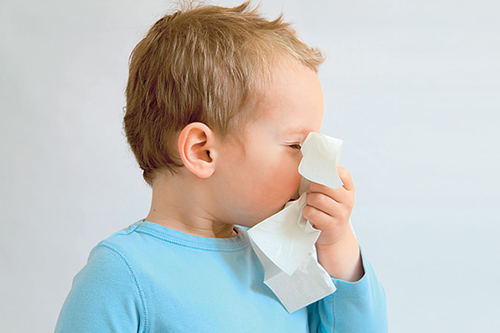
Due to unformed immunity, children are more likely to be prone to nasal congestion on the background of respiratory diseases
Widespread in alternative medicine received cold inhalation... Grind horseradish root, onion and garlic on a fine grater. Pour the gruel into a glass vessel, insert a paper cone with a tube through which to inhale medicinal vapors.
For reference! Candles can be made from solid honey and aloe juice. The resulting mass is frozen for 10-12 hours, cut into longitudinal pieces, inserted into both nostrils.
Flowers and shoots have healing properties lily of the valley... Raw materials for inhalation are harvested during the flowering period of the plant (in spring). The dried fruits are stored in a jar under a tightly closed lid. For inhalation, simply open the container, inhale volatile agents through your nose.
Warming up the ENT organ
Exposure to heat is allowed when discharge from the nose has a transparent color without impurities of purulent masses, at normal body temperature.
If a 3-5 times a day apply a warm boiled egg or a heated bag of salt / sand to the nasal sinuses, then the effect of the procedure is manifested in a decrease in puffiness, and an improvement in blood circulation.
To restore natural breathing through the nose, patients are advised to perform acupressure in the area between the forehead and nose, on the convex lateral surfaces of the nose... Massage in circular motions for quarter of an hour points between the eyebrows, above the ears, the outer corners of the eyes.
The daily frequency of procedures is limited 2-3 sessions.
Conclusion
Facilitate breathing, relieve mucosal edema folk remedies is quite real. Herbal components stop the symptoms of the inflammatory process, but are not able to eradicate the cause of the violation of the integrity of the inner membrane.
It is advisable to use them in preventive measures or in combination with conservative medicine.
Swelling in the nose is caused by dilated blood vessels and blood flow to the organ of smell. Swelling of the nasal mucosa is almost always accompanied by inflammation, which manifests itself, runny nose, sneezing and other respiratory symptoms.
On the nasal mucosa, microbes are retained that penetrate the body from the external environment. Thanks to this barrier, the infection remains in the nasal cavity and does not descend into the organs located below. The fight against foreign substances is manifested by an increase in the permeability of the vascular wall and reflex edema of the mucous membrane.
Swelling of the nose is a symptom of a number of pathologies caused by a specific cause. This is a universal mechanism for dealing with foreign elements, indicating that there is a serious threat to the human body. Swelling of the nasal passages makes it difficult to breathe normally and leads to the development of severe complications, for example, cerebral hypoxia. This problem cannot be ignored; it must be addressed immediately.
Etiology
Causes of nasal edema, which give a person a lot of trouble and worsen the quality of life:
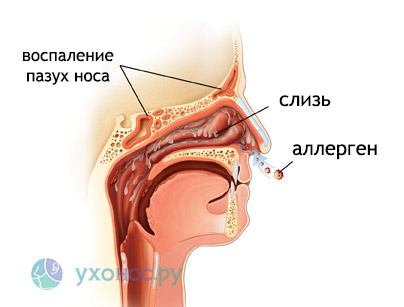
Nasal congestion and swelling without a runny nose occurs at the first symptoms. The reason for this phenomenon is often an unfavorable environmental situation. A polluted environment affects the nasal mucosa, it does not cope with its functions of cleansing and moisturizing and swells.
- In immunocompromised individuals swelling of the nose develops after swimming in cold water, winter walks without a cap, cold water or food.
- In children common reason swelling of the nose becomes - the proliferation of lymphoid tissue located in the nasopharynx.
- Postoperative edema tip of the nose. After rhinoplasty, all patients, without exception, have swelling of the nose.
- Cause of sinus swelling often dry indoor air. The mucous membrane dries up and swells.
The ciliated epithelium lining the nasal cavity and airways has cilia that move synchronously and unidirectionally - from the vestibule of the nose towards the nasopharynx. Normally, due to their movement, foreign substances that have entered the nasal cavity along with the inhaled atmospheric air move to the pharynx and stomach, where they are destroyed. The negative impact of environmental factors disrupts this function. Dust and microbes penetrate the nasal mucosa, irritate it, enhance the process of secretion and accumulation of fluid.
Symptoms
Edema of the nose is manifested by difficulty in nasal breathing, discomfort and, hyperemia and swelling of the mucous membrane of the airways. If the patient's nose swells during sleep, they are loud.

Symptoms of nasal swelling depend on the cause of the pathology:
- When viral infections the nasal mucosa swells, the body temperature rises, colorless appears, headache, muscle aches, watery eyes, cough. The nose clogs up so that the patient has to breathe through the mouth. The sense of smell is reduced or completely disappears, it burns and itches in the nasopharynx.
- Swelling of the nasal mucosa caused by bacterial sinusitis, manifested by heaviness in the projection of the affected sinus, fatigue, irritability, weakness. Purulent contents of a greenish-yellow color with a smell and streaks of blood come out of the nose. Severe swelling of the nose is a symptom.
- Allergic rhinitis manifested by frequent sneezing, nasal swelling, the appearance of abundant mucous discharge.
- Swelling of the nose - a consequence of any operation on the airways... Immediately after it, blood circulation is difficult, breathing is not fully restored, the mucous membrane is edematous and crusted.
- Post-traumatic nasal edema manifests itself as pain in the face, swelling, nosebleeds, bruises.
Treatment
Traditional therapy
Treatment of nasal edema begins after identifying the cause of the pathology and making a diagnosis.
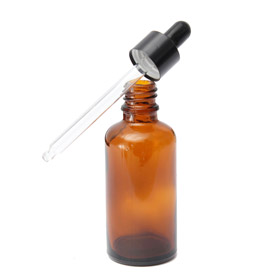
Physiotherapy treatment includes phonophoresis, which normalizes vascular tone and the work of the ciliated epithelium; electrophoresis and laser therapy - methods of dealing with vascular dystonia.
It is indicated in the presence of congenital anomalies of the nose and is aimed at correcting the anatomical nasal structures. - surgery to restore the correct shape of the nasal septum. This method gives remarkable results, relieving patients from swelling and nasal congestion.
To expand the blood vessels, electroplasma coagulation, ultrasonic disintegration, and laser destruction are performed.
Neoplasms in the nose are treated in a complex way with the help of medication and physiotherapy. If there is no therapeutic effect, the tumor is removed.
During pregnancy, the use of vasoconstrictor drops is prohibited.... Respiration is restored by cleansing and rinsing the nasal cavity with saline, safe means Dolphin, Aqualor... You can treat nasal swelling with acupressure, breathing exercises, ultrasonic inhalations, and traditional medicine.

Among non-drug remedies for nasal edema, the most effective are... Steam expands blood vessels and reduces swelling. For inhalation, use a soda solution, decoctions of medicinal herbs - calendula, peppermint, thyme. Patients are advised to drink as much liquid as possible, which dilutes the nasal mucus and removes it from the body. It is useful to drink tea with honey and lemon, chamomile tea, broths. Warming the sinuses with pepper plaster is a good method for swelling of the nose. It is cut into small pieces and glued to the bridge of the nose and cheeks in the projection of the inflamed sinuses, and left for 10 minutes.
You can eliminate the swelling of the child's nose by steaming his legs in hot water before going to bed. Treat runny nose and nasal swelling in children, especially newborns, should be under the supervision of a specialist... This is not easy to do, because they drip vasoconstrictor drops prohibited. To eliminate the swelling of the child's nose, folk remedies are used - saline solution, essential oils, decoctions of medicinal herbs in the form of inhalations and rinsing the nose.
ethnoscience
Folk remedies to help relieve swelling of the nose:
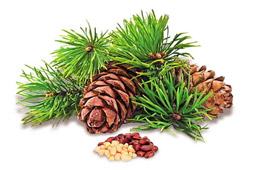
Prevention

To prevent the development of nasal edema, the following rules must be followed:
- Treat the underlying disease - acute, caries.
- Do not overcool.
- Strengthen immunity: temper, fully sleep and eat, walk in the fresh air.
- Use "Aquamaris", "Dolphin" during the day for preventive purposes.
- Avoid contact with infectious patients.
- Avoid contact with allergens.
- Restore abnormal structures of the nose.
- Do not injure your nose.
- Do not use the same vasoconstrictor drops for a long time.
- Fight bad habits.
- Humidify indoor air.
- When the first signs of pathology appear, consult a doctor.
 Compliance with these basic rules will significantly reduce the risk of developing inflammation and swelling of the nose.
Compliance with these basic rules will significantly reduce the risk of developing inflammation and swelling of the nose.
It must be remembered that swelling of the nose is an insidious symptom of various diseases that cannot be ignored and left to chance. This symptom can cause a latent disease and lead to serious complications. A timely visit to the ENT doctor will help eliminate this symptom and prevent future health problems. Only a professional will accurately determine the cause of the pathology and prescribe effective treatment... An accurate diagnosis is the key to successful treatment!
Video: allergies are one of the main causes of edema, Dr. Komarovsky
by The Wild Mistress's Notes
As a rule, the nose swells with progressive inflammatory processes of the mucous membrane, although it is not always accompanied by a runny nose. It becomes difficult to breathe, the brain does not receive enough oxygen, and the eternal dry mouth irritates even more breathing disorders. Why does nose swelling occur and what to do?
"Swelling of the nose often accompanies a cold, but it can also occur due to the accumulation of lymph during inflammation of the mucous membrane, making it difficult to breathe and causing a lot of inconvenience."
Causes of the disease
The accumulation of lymph due to inflammatory processes in the mucous membrane - those processes that cause swelling of the nose. The reasons This condition can be different, the most common of them are the following:

- Allergic reactions to dust, pollen, and medications.
- Sharp respiratory diseases, disruption of the upper respiratory tract due to infection.
- Injury to the nose or anatomical defects in the structure of the nasal septum (usually congenital).
- Changes in the hormonal balance of the body (taking medications, pregnancy).
- Hypothermia.
- Tumors and other growths in the nose.
A sign of inflammation caused by bacteria and microbes is profuse nasal discharge, headache, and fever. Most often, edema is accompanied by all the "bouquet" of symptoms of a cold, but sometimes there is no runny nose - but there is a sore throat, pulls to sneeze.
Treatment of swelling of the nose
Before starting treatment, you should diagnose the cause of the process. Often, if the edema is caused by an allergy, then it is enough to remove the irritating factor (allergen) and use the antihistamines familiar to allergy sufferers. But sometimes the situation is so difficult that it comes to surgical intervention - the doctor must determine the causes and prescribe treatment.
There are many home remedies available to help with nasal swelling. Treatment can be carried out by flushing, inhalation and nasal instillation, this is great if the edema is a consequence of colds, flu, etc. infectious diseases... The following methods are suitable for home treatment.
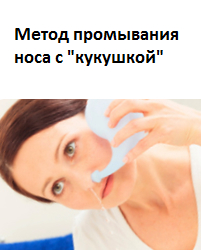
Rinsing the nose carried out using a saline solution with the addition of iodine. Add 2 teaspoons to a glass of warm water sea \u200b\u200bsalt and 4-5 drops of iodine, dissolve, and begin to rinse the nose, injecting liquid into one nostril and releasing it from the other.
If you cannot cope with the washing on your own, buy a "cuckoo" at the pharmacy, it will facilitate the task. Please note that you should not use boiling water - just warm water is enough, carry out the procedure carefully so as not to damage the mucous membrane.
Inhalation also great for swelling and stuffy nose. Add 10-15 drops of essential oil to a pot of hot boiling water. For these purposes, oil of pine needles, fir, spruce, cedar and eucalyptus is well suited. You can also add rosemary or orange oil to reduce the smell. Cover your head with a towel and breathe in the fragrant steam for 10-15 minutes. Such inhalations should be carried out every day 2-3 times until complete recovery.
Nasal drops - a proven remedy that helps get rid of edema in 2-3 days. At the pharmacy, choose vasoconstrictor drops (for example, Sinupret and Zyrtec are suitable). But if you have a tendency to allergies, then it is better to prefer pharmacological drugs folk remedies ... Onion juice diluted with warm water, beetroot juice and aloe and Kalanchoe extract perfectly cope with swelling and runny nose.

It also helps to speed up recovery warming up ... You can apply warm boiled eggs to the nose and bridge of the nose. An excellent reusable product - heating with salt... To do this, warm up fine salt "Extra" in a dry frying pan and pour it into a handkerchief or cotton napkin. Apply to the bridge of the nose through a towel - so as not to get burned, and when it starts to cool down - without it. The salt can be heated constantly, it should be kept until it cools down.
It is quite easy to get rid of nasal swelling at home, you should allocate only 20-30 minutes a day for treatment, and in 2-3 days breathing will return to normal.
Discharge of snot and puffiness in the nose are very unpleasant symptoms. Most often they are caused by colds... But it also happens in another way. Today's article will tell you why it occurs without a cold. The causes of the disease and methods of treatment will be presented to your review.
Symptoms of puffiness in the nose
How is the swelling of the nasal mucosa manifested without a runny nose? A person faced with such a problem cannot breathe normally. He loses his sense of smell, is unable to feel even strong odors. With severe swelling, the patient has to breathe through his mouth at all. All this is not only unpleasant, but also quite dangerous.
With a long stay in a similar state, the mucous membranes of the nose dry up, become inflamed, cracks and erosion appear on them. To treat this problem is already more difficult than a banal congestion. Therefore, if you experience swelling of the nose (without a runny nose), the reasons should be determined as soon as possible. A specialist can do this correctly.
The principle of development of puffiness
How does puffiness appear? When microbes and viruses hit the mucous surface, a protective response occurs. On the inner surface of the nose, hyperemia occurs, the vessels dilate, and redness of the membranes is noted. In this case, the person feels swelling and shortness of breath. In this way, the body tries to protect itself from the penetration of the infection deeper. Most often, at the same stage, the patient develops an abundant secretion, simply snot.
But what does swelling of the nasal mucosa without a runny nose mean? If there is no liquid discharge, then several scenarios are possible:
- There is no infection, and hyperemia has arisen due to an external stimulus.
- There is an infection, but the mucous discharge dries up very quickly.
- The swelling is so severe that the thick secretion cannot escape from the sinuses.
- There is contact with a solid object, which provokes irritation.
Consider what causes a swelling of the nose without a runny nose and how to cope with it.

Physiological rhinitis in newborns
Often babies in the first year of life suffer from swelling of the nasal mucosa. In this case, the symptoms are as follows: the baby sleeps with an open mouth, snores, swallows air during feeding and makes grunting sounds. Parents have a feeling that the baby's nose is full of snot. But this is far from the case. On the contrary, the mucous membrane of the baby's respiratory tract is very dry. This often happens in a warm room or with insufficient air humidity. It promotes thick mucus that remains in the upper respiratory tract after birth. There is nothing wrong in this state. But how can you help the baby? What to do if a child has swelling of the nasal mucosa?
Treatment involves the organization of comfortable living conditions: air humidity over 50%, temperature no more than 22 degrees, abundant drink and loose clothing. In addition, it is permissible to use preparations based on sea water, for example, "Aquamaris", "Otrivin More". They will moisturize the surface of the nose, soften the crusts and, if necessary, remove pathogens.
Swelling of the nose during pregnancy
Expectant mothers also often experience nasal congestion. This happens at different times. It is clinically confirmed that every second woman experiences nasal swelling during pregnancy. It is caused by hormonal changes. During this period, progesterone predominates in the body. It has a relaxing effect on muscle tissue. The nasal mucosa is exposed to the same effect. The vessels expand. The situation is aggravated by the fact that expectant mothers have an increase in the volume of circulating blood.
There are no specific drugs to correct this condition. It is not recommended for expectant mothers to use medicines... Therefore, experts are allowed to use only saline solutions. They relieve swelling due to their composition. Salt attracts excess fluid, reducing its content in the nasal mucosa. If the congestion is so strong that the expectant mother is forced to breathe through her mouth, then the doctor may prescribe vasoconstrictor drugs. It is unacceptable to use them yourself.
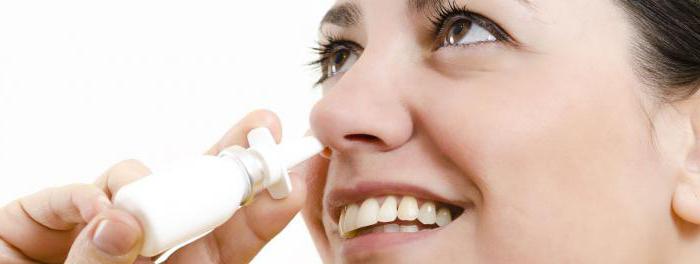
Medicamentous rhinitis, or How to get used to drops
Why does a person have a swelling of the nose without a runny nose? The reasons may lie in the misuse of vasoconstrictor drugs. As you know, they can be used for no more than three days. Some manufacturers allow medication to be used for up to 5 days. Only a few types of medicines are allowed to be used for a week or even 10 days. All these restrictions are written in the instructions. But not every consumer adheres to it.
During the use of vasoconstrictor compounds, an effect on the mucous membrane occurs. The vessels in it narrow, due to which hyperemia and edema go away. Breathing after such a simple manipulation is restored within a few minutes. If you disregard the doctor's recommendations and the advice of the instruction, then the mucous membrane and blood vessels will quickly get used to this "spurring" by drops. As a result, a person will not be able to breathe normally without them. Often these patients are called "naphthyzine addicted". Getting rid of such a problem is quite difficult. The longer you use medications, the more you need them, the drops begin to help in less and less time: first, the drugs work for 6 hours, then 4, and so on. It comes to the point that breathing with their help is not facilitated at all. To correct this pathology, doctors prescribe corticosteroids ("Tafen", "Nazonex"). Regular use is also prescribed. saline solutions... For persons with naphthyzine dependence, vasoconstrictor drugs are contraindicated.
Rhinopharyngitis or posterior runny nose
A person can feel congestion without a runny nose due to the occurrence Often children face such a problem. Parents note that at first the baby sneezed, after which his nose got stuffy, but there is no snot as such. At the same time, a characteristic squelch is heard when breathing.
If the doctor examines a patient with such complaints, then a rhinoscopy of the nose will show posterior rhinitis. The doctor may call it rhinopharyngitis or nasopharygitis. With such a pathology, the nasal mucosa becomes inflamed, but the outflow of the secret does not go outside, but inside. In this case, a red "blooming" throat is often noted. The problem can be aggravated by bronchitis or pneumonia as mucus gets into the larynx and lower respiratory tract. Treatment of nasopharyngitis involves the use of vasoconstrictive drops for three days (if not contraindicated), treatment of the nose with anti-inflammatory compounds ("Pinosol", "Chlorophyllipt"), the use of immunomodulators ("Grippferon", "Cycloferon"). If accession is proven bacterial rhinitis, then antimicrobial formulations are prescribed (mainly based on amoxicillin).

Neoplasms or the presence of a foreign body
Congestion and breathing problems can be symptoms that a person has a cyst in the sinus. This is a very unpleasant pathology, since the neoplasm is gradually growing and can completely block the lumen for the passage of oxygen. Treatment this disease performed surgically. A rhinoscopy of the nose is performed beforehand. After the procedure, the doctor prescribes anti-inflammatory and antihistamines, and antibiotics for local use may be recommended.
If a polyp is not found during the study or there may be foreign body... Children often face this problem. While playing, kids can shove a bead, a small ball or a toy into their noses. In this case, the mucous surface in contact with a solid object is irritated and edema occurs. In this situation, one cannot hesitate. Be aware that you cannot solve the problem on your own. Be sure to see a specialist to remove a foreign object from the nose.

Injury
Severe swelling of the nose without discharge of snot occurs when tissue is damaged. If you have had an injury to the nose, in the field of which you notice difficulty in breathing, then most likely there is damage. It doesn't have to be a fracture. Even a crack in the nose or damage to the septum shows up with these symptoms. Outwardly, it looks like this: a person finds it difficult, and then completely stops breathing through the nostrils, the mucous membrane is irritated and has a red tint, there is bleeding from the nose, the skin on the face in this area turns red and even becomes cyanotic.
A surgeon and an otorhinolaryngologist are involved in the treatment of nose injuries. Doctors conduct an examination, after which they issue their verdict. Some situations require nasal tampons and bandages indefinitely.

Home diagnostic methods: what can you do yourself?
Can sinus puffiness be removed at home? It all depends on the cause of the development of pathology. Define it with maximum confidence. Use this method only if you are not accustomed to:
- Inject drugs to relieve swelling in each nostril (follow the dosage indicated in the instructions).
- Lie on the side where the nasal congestion is.
- After 5 minutes, turn onto the other side.
If the congestion has moved to the other side, then we are talking about rhinopharyngitis, an abundant accumulation of thick secretions (sinusitis, sinusitis). When the swelling remains in place, it is in the presence of a foreign object, cyst, or in a nose injury.

Summarize
From the article you were able to find out why and how swelling of the nose occurs. If you suddenly encounter such a problem, then it is better to consult a specialist than to guess on the coffee grounds. The doctor is likely to make the correct diagnosis and prescribe you correct treatment... Free breathing!
